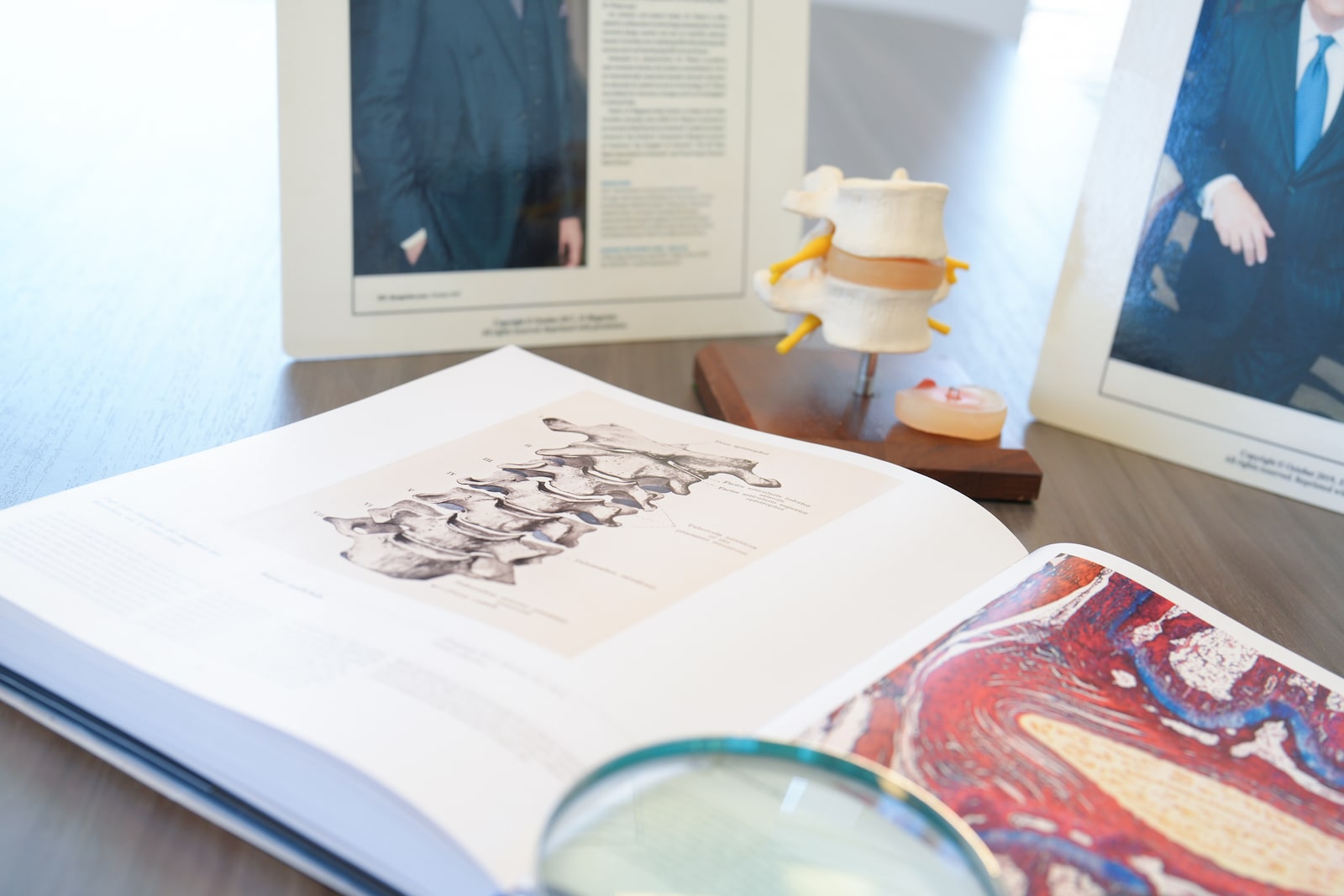The Comprehensive Recovery Timeline for Cervical Disc Replacement
Cervical Artificial Disc Replacement (ADR) is an advanced, motion-preserving surgical option for people living with chronic neck pain and degenerative disc problems. Unlike traditional fusion, this procedure replaces the damaged disc with an artificial disc, helping to maintain the natural movement of the neck while relieving pain and pressure on the nerves.
Some of the most common questions patients have before undergoing cervical ADR are:
- What is cervical ADR recovery like?
- How quickly will I start to feel better after cervical disc replacement?
- When can I safely return to my normal activities?
Understanding the recovery process is essential for both peace of mind and for achieving the best possible results after surgery. Every patient wants to know what to expect at each stage and how to take the right steps for a smooth, confident return to living an active life. This guide provides a clear, step-by-step timeline that outlines what happens after surgery, from those first hours in the hospital all the way through returning to daily activities and beyond.
Why a Clear Recovery Plan is Key to Success
A clear and structured recovery plan is essential for healing well after cervical artificial disc replacement. Approaching each stage of recovery mindfully and intentionally helps the body heal as intended and sets the foundation for outstanding, long-lasting results. While cervical disc replacement often allows for a faster recovery compared to traditional spinal fusion, it is important for patients to follow expert recommendations every step of the way. With the right plan and guidance, most people can return to their favorite activities more quickly and safely.
Dr. Peloza is dedicated to helping each patient experience the smoothest and most successful recovery possible. He believes that every person’s path to recovery is unique and provides carefully personalized plans that address individual needs, preferences, and goals. Along with his team, Dr. Peloza offers compassionate support and clear instructions, helping patients feel confident and cared for as they return to an active, pain-free life.
The Cervical ADR Procedure: A Quick Overview
During cervical artificial disc replacement, Dr. Peloza makes a small incision in the front of the neck to access the damaged or worn-out disc. The problematic disc is gently and completely removed and then replaced with a modern artificial disc that is specifically designed to recreate the natural movement of the neck. This advanced technique avoids the need to fuse bones together, which preserves spinal flexibility and greatly reduces disruption to the surrounding muscles and tissues. The result is a surgical solution that not only relieves pain but also allows for a faster, smoother recovery compared to traditional, open spine surgeries like spinal fusion.
Your Stage-by-Stage Recovery Timeline
Immediately After Surgery (The First 24 Hours)
Immediately after cervical artificial disc replacement, patients may spend one night in the hospital for monitoring and initial recovery or they may be released within 23 hours, which is same-day surgery. During this time, the care team focuses on controlling any pain or discomfort with appropriate medications and making sure vital signs remain stable. One of the biggest advantages of this procedure is early mobility; most patients are able to get out of bed and walk around just hours after surgery, which helps reduce risks like blood clots and supports quicker healing. The medical staff will also keep a close watch on the incision site to ensure there are no signs of infection or excessive swelling.
The First Two Weeks: Rest and Light Activity
During the first two weeks after cervical disc replacement, the focus is on rest and gentle movement to support the healing process. Once home, patients are encouraged to take things slowly and avoid any strenuous activity. Simple household tasks and self-care are usually allowed. However, it is important not to drive during this time and to steer clear of heavy lifting or any movements that strain the neck. Daily activities should be kept light while making sure to protect the neck from unnecessary stress.
Despite these restrictions, staying active in a safe way is essential. Taking short, frequent walks several times a day helps promote healthy circulation, reduces the risk of blood clots, and can even speed up overall recovery. Following these guidelines not only supports the healing process but also lays a strong foundation for regaining strength and flexibility in the weeks ahead.
Weeks 2-6: Reintroducing Normal Activities
From weeks two to six after cervical disc replacement, most patients begin to reintroduce more normal activities under their doctor’s guidance. During this period, a follow-up appointment is typically scheduled so Dr. Peloza can assess the incision, monitor healing progress, and answer any questions about recovery. Many patients begin outpatient physical therapy at this stage, focusing on gentle exercises that help restore neck strength and flexibility while supporting safe movement.
As symptoms improve and the body continues to heal, it is generally safe to restart light daily routines. People with desk jobs often return to work while being mindful of posture and comfort. Activities should remain low-impact, and it is still important to continue to avoid any heavy lifting or sudden, strenuous motions. This gradual, structured approach helps set the stage for a strong recovery and long-term success.
Weeks 6-12: Building Strength and Endurance
Between weeks six and twelve after cervical disc replacement, most patients find themselves growing stronger and more active each day. Physical therapy typically advances during this time. Your physical therapist will likely introduce more targeted and rigorous exercises meant to build endurance, flexibility, and overall neck stability. With steady progress, many people receive clearance from their surgeon to resume more strenuous activities such as swimming, cycling, or other fitness routines.
It becomes especially important during this phase to pay close attention to posture and use proper body mechanics. Good habits now will help protect the spine and keep it healthy for the long run. This period of recovery is about regaining confidence, rebuilding physical strength, and easing back into favorite activities.
3 Months and Beyond: A Return to an Active Life
By three months after cervical disc replacement, most patients are able to return to almost all their regular activities, including sports, exercise, and active hobbies. At this stage, the artificial disc has been well integrated, and the neck typically moves smoothly and comfortably. For many, this means enjoying significant relief from pain and regaining the ability to turn, look up and down, and move naturally—benefits that set this procedure apart from spinal fusion.
Maintaining these improvements over the long term depends on a strong, healthy body. Core strengthening exercises, which stabilize and support the spine, should become a routine part of life, along with good posture and smart movement habits. Adopting a healthy lifestyle—including staying active, eating well, and not smoking—can help safeguard spine health and keep the neck feeling good for years to come.
Factors That Influence Your Recovery Speed
- Patient Health: How overall health and pre-operative condition can impact healing.
- Surgical Technique: The benefits of a minimally invasive approach in speeding up recovery.
- Adherence to Post-Op Care: The critical role of following physical therapy and activity restrictions.
- Surgeon Expertise: Why choosing a highly experienced surgeon is vital for a smooth procedure and recovery.
Several factors can significantly influence how quickly a patient recovers from cervical disc replacement. Understanding these variables helps patients set realistic expectations and take steps to optimize their healing process.
Patient Health: Overall health and preoperative condition play a crucial role in recovery speed. Research shows that patients with better preoperative physical function scores tend to have improved outcomes after cervical disc replacement. Mental health also matters; studies demonstrate that patients with better preoperative mental health status experience significantly better pain relief, physical function, and overall recovery compared to those with depression or anxiety before surgery. Additionally, factors like body weight, smoking status, and the presence of other medical conditions can impact healing time.
Surgical Technique: The minimally invasive approach used in modern cervical disc replacement significantly speeds recovery compared to traditional open spine surgeries. Research confirms that minimally invasive cervical procedures result in reduced tissue trauma, shorter hospital stays, and faster return to normal activities. Patients undergoing outpatient cervical disc replacement can often return home the same day, with most people able to resume light work within 1-2 weeks.
Adherence to Post-Op Care: Following physical therapy recommendations and activity restrictions is critical for optimal recovery. Research demonstrates that patients with higher “activation levels” (meaning those who actively engage in their recovery process) show significantly better adherence to physical therapy, with improved attendance and participation rates. Studies confirm that comprehensive physical therapy interventions are effective in improving muscle function, pain, and disability after cervical spine surgery, with formal rehabilitation programs typically beginning 2-3 months postoperatively providing the best outcomes.
Surgeon Expertise: The experience and skill of the surgeon performing the procedure can significantly impact both the surgery itself and recovery outcomes. Research indicates that surgical outcomes can vary considerably based on surgeon experience, with single-surgeon studies showing that results “may vary, depending upon who is performing the operation”. Studies demonstrate that experienced surgeons using advanced techniques achieve better clinical outcomes, with some reporting success rates exceeding 90% for cervical disc replacement procedures.
Why Choose Dr. Peloza for Your Cervical Disc Replacement?
When it comes to cervical disc replacement, Dr. Peloza brings more than three decades of specialized experience in motion-preserving spine surgery. His expertise has earned him international recognition as a leader in the field, with patients traveling from across the country and around the world to benefit from his advanced surgical skills and innovative approach to spine care.
Dr. Peloza’s philosophy goes beyond simply treating the condition—he is dedicated to empowering patients to return to active, pain-free lives. He understands that each person’s goals and lifestyle are different, and he works closely with patients to develop treatment plans that align with their individual needs and expectations. This patient-centered approach ensures that every aspect of care from the initial consultation through recovery is tailored to help patients achieve their best possible outcomes.
Using state-of-the-art technology and the most advanced minimally invasive techniques available, Dr. Peloza is able performs cervical disc replacement procedures with exceptional precision and safety. These cutting-edge methods not only improve surgical outcomes but also significantly reduce recovery time, allowing patients to get back to their normal routines faster and with greater confidence in their long-term results.
Schedule Your Consultation Today
Cervical artificial disc replacement offers a structured and predictable recovery process that allows most patients to return to their favorite activities within three months. From the first 24 hours in the hospital through gradual reintroduction of activities and building strength, this comprehensive timeline provides a clear roadmap for healing and getting back to an active, pain-free life.
If chronic neck pain is limiting your daily activities or preventing you from enjoying the things you love, it may be time to explore whether cervical disc replacement is the right solution for you. Dr. Peloza’s three decades of experience in motion-preserving spine surgery, combined with his patient-centered approach and advanced minimally invasive techniques, can help you make an informed decision about your care. Every patient’s situation is unique, and Dr. Peloza takes the time to thoroughly evaluate each case and discuss all available options.
To schedule a consultation with Dr. Peloza at his Chesterfield practice, just outside St. Louis, contact the office today. The team welcomes both local patients and those traveling from out of town, providing personalized support throughout the entire process. Take the first step toward relief and a return to the active lifestyle you deserve.




